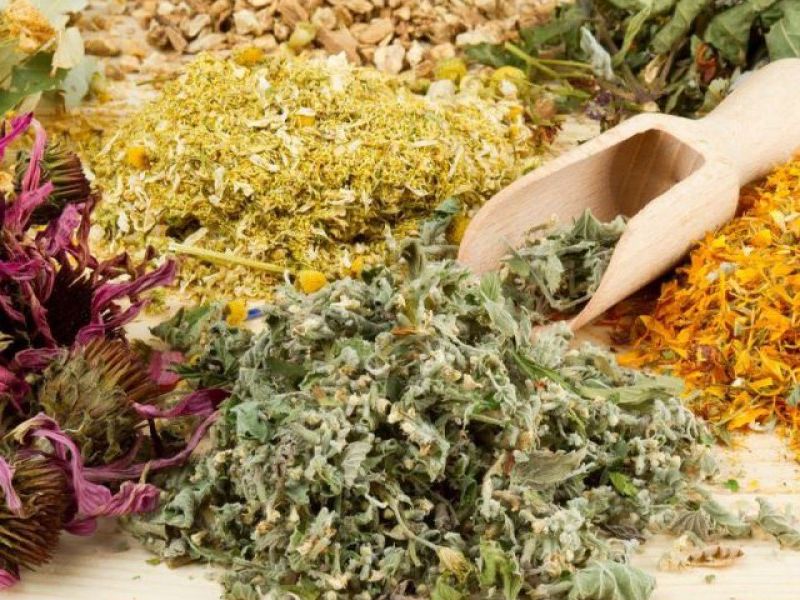Marsh ledum (or marsh stupor) is an evergreen shrub. According to legend, a swamp serpent lived in the Pomor taiga forests. When the wild rosemary was set on fire, the snake crawled out and absorbed the intoxicating aroma of the bush. Having met a sick person on his way, he wrapped himself around him, and thus healed the sick.
Distribution and ecology
Ledum has a wide distribution area. It grows in North America, in the European part of Russia, Siberia, as well as in the Far East and northern Asia, where it is confined mainly to wetlands of coniferous forests and peat bogs.
Features of natural conditions favorable for the plant:
- Attitude to light: shade-tolerant.
- Relation to moisture: hygrophilous.
- Attitude to the soil: unpretentious.
Photos of wild rosemary are presented in this article.
Plant characteristic
 Ledum is a branched shrub. The height of the shoots ranges from 40 to 80 cm, the bark of the stems is colored dark gray with a very strong, intoxicating aroma. Leaves are alternate, linear-oblong, short-petiolate, their edges are bent down. The length of the sheet varies greatly, and the width ranges from 2 to 12 mm.
Ledum is a branched shrub. The height of the shoots ranges from 40 to 80 cm, the bark of the stems is colored dark gray with a very strong, intoxicating aroma. Leaves are alternate, linear-oblong, short-petiolate, their edges are bent down. The length of the sheet varies greatly, and the width ranges from 2 to 12 mm.
Flowers are yellowish-white, have a strong aroma, have long stalks, collected in corymbose inflorescences at the ends of the branches. The plant blooms from May to July. The fruit is a multi-seeded capsule that ripens in August - September.
Collection and procurement of raw materials
For the manufacture of medicines, young plants are harvested. Harvesting is carried out from August to September. Store the prepared raw materials in a cool and dark place separately from other workpieces, since it is a potent agent. To preserve the raw materials of wild rosemary, re-harvesting should be done no earlier than after seven to eight years in the same area.
Medicinal substances contained in the plant
The content of essential oils in young shoots of wild rosemary is up to 7.5%. The healing properties of the plant are determined by the content of ice and palustrol... Also, wild rosemary sprouts contain many tannins, which are used to tan leather.
They also contain glycosides and biologically active substances. The stems contain resins, triterpene compounds, and coumarins.
Properties and application
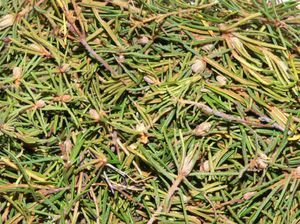 Despite the fact that wild rosemary is poisonous, when used correctly, it has a positive effect on the body's systems due to the content of essential oils.
Despite the fact that wild rosemary is poisonous, when used correctly, it has a positive effect on the body's systems due to the content of essential oils.
In this regard, marsh rosemary is actively used for various diseases, both in folk and in official medicine. Preparations from this plant species are used both internally and externally... They are used to make ointments, alcohol and oil tinctures. The positive effect of wild rosemary preparations is noted:
- with diseases of the respiratory system;
- with disorders of the nervous system;
- with bronchial asthma;
- with disorders of the digestive system;
- with diseases of the urinary system.
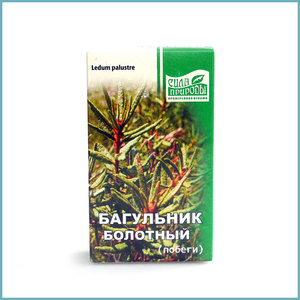
An infusion of wild rosemary is used to treat frostbite, endarteritis, to heal lacerated and stab wounds.The essential oil of the plant has soothing properties, and therefore is part of ointments and is used to treat various diseases of the nervous system, nerve entrapment, radiculitis, and is used to treat sprains and bruises. Rosemary oil is part of nasal drops.
Medicines containing the active substances of a bog plant, are used for bronchitis as an expectorant, as well as with tracheitis and laryngitis. These drugs have antispasmodic properties, promote vasodilation and lower blood pressure.
Also, raw materials are included in various charges together with other medicinal herbs, such as:
- marshmallow;
- chamomile;
- motherwort.
These fees are used in the treatment of hypertension and obesity.
Preparations from young branches have a disinfectant effect. In this connection, they are indicated in the treatment of tuberculosis, intestinal disorders, diabetes, rheumatism, and eczema. Also, dry shoots of the plant are used as an insecticidal drug against bedbugs and moths.
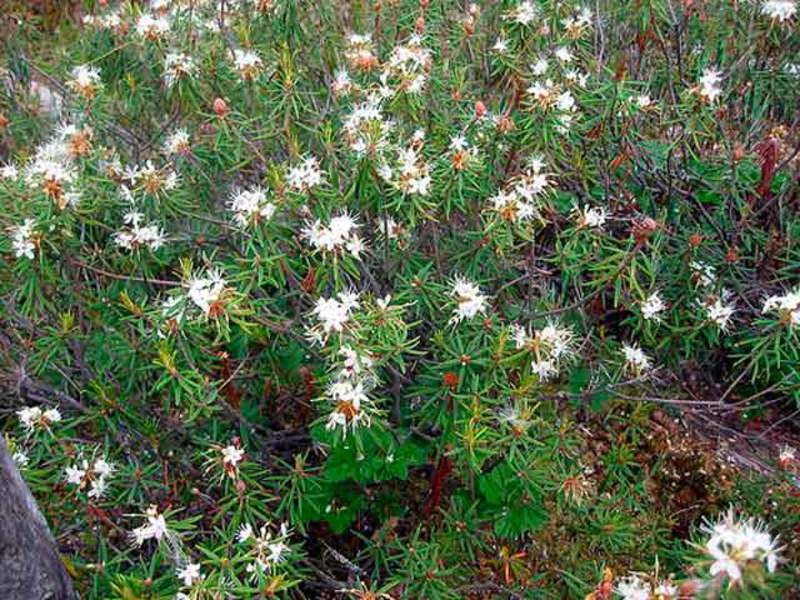
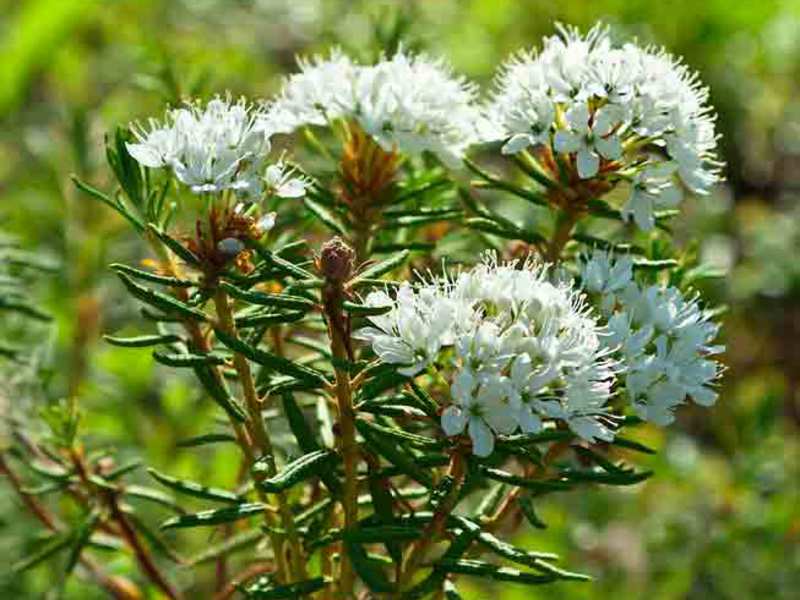

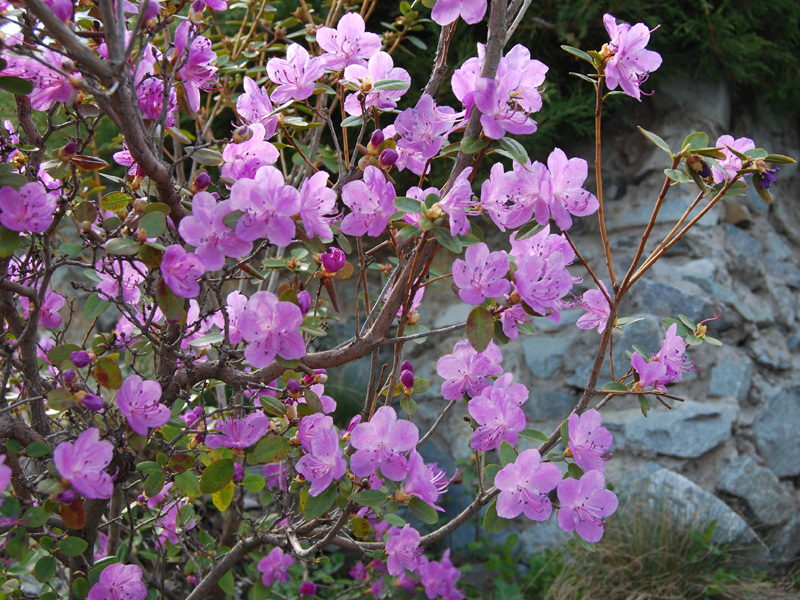
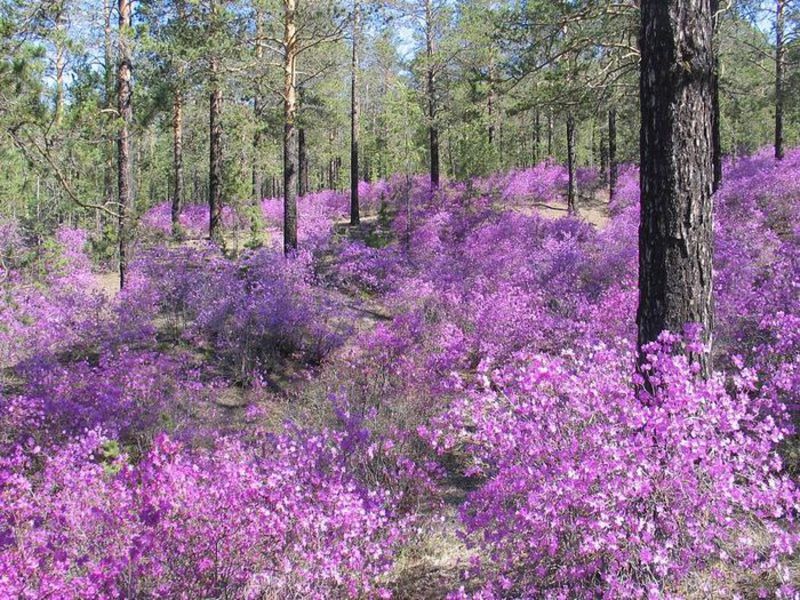
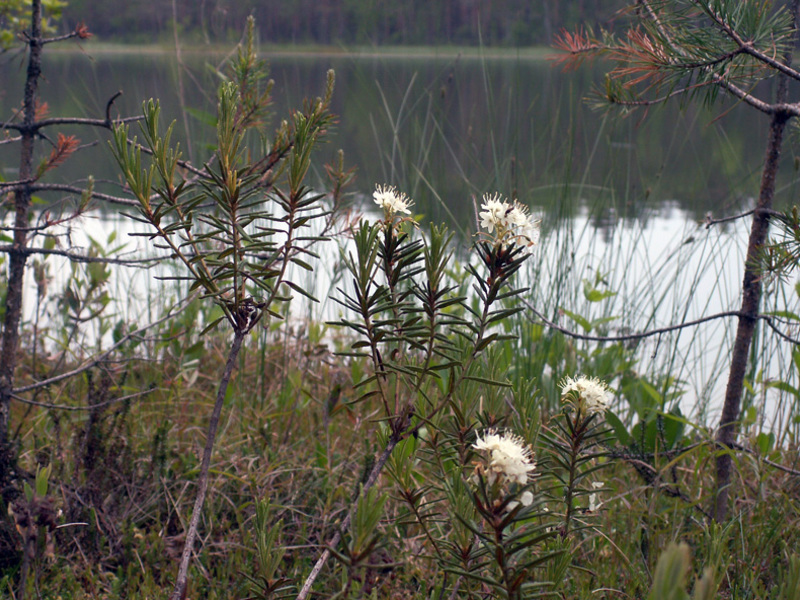
Please note that there are contraindications to the use of medicines based on wild rosemary... They are pregnancy, breastfeeding, children under 14 years of age. Liver disease, glomerulonephritis. Overdose symptoms are depression or excitement of the nervous system, nausea, vomiting, headache, dizziness. In this case, the use of drugs must be stopped.
Growing wild rosemary
Marsh wild rosemary is unpretentious in cultivation. Only in dry summer periods it must be watered abundantly. Despite the fact that in its natural growth the plant successfully propagates by seed, when growing it is desirable to propagate it by dividing the bush or cuttings. It should be borne in mind that this plant is poisonous, so it is not recommended to plant it next to apiaries.
